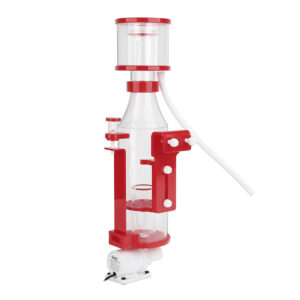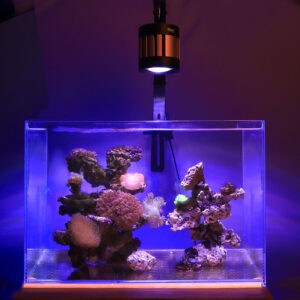In the difficult community of a reef tank, the presence and stability of calcium are crucial for the flourishing energy of coral ecosystems. Calcium, a valuable element, intricately shapes the skeletal foundations of corals and marine organisms. This essential mineral not only fosters the structural integrity of coral reefs but also serves as a barometer for the overall health of the aquatic surroundings.
Content Table
This blog post provides the critical function of a calcium carbonate reef tank, delving into the most useful calcium stages, demanding precipitation situations, and the tricky technology behind testing reef tank calcium levels and preserving reef tank calcium levels.
Let’s move forward with this article to resolve the secrets of calcium’s impact on the enchanting world within a reef tank.

Calcium in Reef Tank
Calcium plays a critical role in retaining a wholesome and thriving reef tank. In a reef tank, calcium is vital for the growth and improvement of corals, in addition to different calcifying organisms like coralline algae and certain forms of invertebrates. Corals use calcium to construct their skeletal systems, which offer support and safety.
If calcium tiers are too low, corals won’t be capable of growing well, resulting in stunted or dangerous colonies. On the other hand, if calcium ranges are too high, it could lead to precipitation and the formation of harmful deposits.
Calcium also plays a role in retaining the alkalinity, or carbonate hardness, of the water in a reef tank. The stability between calcium and alkalinity is essential for the health and balance of the tank. Proper calcium sets the path for the right growth of corals and assists preserve a solid pH degree, which is vital for the general well-being of the tank population.

Reef Tank Calcium Level
Maintaining the proper calcium stage in a reef tank is critical for the health and boom of corals. A reef tank’s advocated calcium stage is generally between 380 and 450 (ppm). This level gives corals the necessary calcium ions to build and hold their skeletal structures.
Calcium Precipitation in Reef Tanks
Calcium precipitation refers back to the procedure where extra calcium in the water combines with other elements, such as carbonates or phosphates, to form solid particles. This article settled on corals, rocks, and devices, inflicting harm and inhibiting coral growth.
For your example: if calcium ranges surge to 500 ppm, precipitation can also arise, encrusting tank factors. Striking the right stability is key; insufficient calcium impedes coral growth, even as extra can lead to aesthetically displeasing deposits.
To prevent calcium precipitation, it is crucial to maintain the right alkalinity and magnesium levels. In addition to Calcium, alkalinity allows for the stabilization of pH and prevents rapid fluctuations in calcium stages. Magnesium acts as a buffer, preventing the extra accumulation of calcium ions.
Effects of Calcium Levels on Coral Growth
Both low and excessive calcium levels may have negative consequences on coral growth. If the calcium stage is just too low, corals may not be capable of building and preserving their skeletons nicely, leading to susceptible or stunted growth. In assessment, if the calcium stage is simply too high, it can inhibit coral increase by causing excessive precipitation and interfering with other important techniques within the coral.

Test Calcium in Reef Aquarium
Monitoring calcium levels is crucial to make the aquarium environment conducive to the increase and development of these organisms.
One commonplace method is using a Calcium kit or Aquarium test kit, which typically includes reagents and a color chart. The water sample from the aquarium is mixed with the supplied reagents, causing a chemical response that produces a color exchange.
By comparing the resulting coloration to the chart, you’ll be able to decide the calcium concentration in elements per million (ppm).
Once the calcium stage has been decided, it’s miles essential to take suitable action to hold or modify it as needed. A healthy reef aquarium usually calls for calcium levels between 380 and 450 ppm. If the check results display that the calcium degree is too low, it can hinder coral growth and lead to weakened skeletons.
In this case, it may be necessary to supplement the aquarium with calcium additives or adjust the water chemistry to increase calcium levels gradually.
On the opposite hand, if the calcium degree is just too high, it may be necessary to dilute the water by including freshwater or creating a partial water exchange. It is also crucial to perform partial water changes or use specific products to help decrease calcium levels.

Raise or Lower Calcium in a reef tank
Here’s a while and the way to raise or decrease calcium tiers in reef tanks:
When to Raise Calcium
1. Newly Established Tanks
In newly installed reef tanks, calcium levels can be to start with low. Begin testing regularly and adjust the range according to the recommended range (380 to 450 ppm).
2. Rapid Coral Growth
If you observe speedy coral growth or if you want to higher level of calcium because of a thriving coral population, you would possibly need to add supplements to maintain the levels.
How to Raise Calcium
1. Calcium Supplements
Use commercial calcium supplements particularly prepared for reef aquariums. Some common options are calcium chloride, calcium hydroxide, or calcium carbonate. Follow the manufacturer’s instructions for dosing to avoid higher levels (not greater than 450 ppm), you can do it with the dosing pump effectively.
2.Kalkwasser (Calcium Hydroxide)
Some reef keepers use Kalkwasser to complement calcium and alkalinity concurrently. It can be added to an auto top-off kit or a separate dosing system.
3. Calcium Reactors
Advanced reef keepers can also choose calcium reactors, which automate the manner of adding calcium and different trace elements. These systems can provide a regular delivery of calcium in a required amount.
When to Lower Calcium
Rare Occurrence
It’s much less unusual to decrease calcium levels in a reef tank. Elevated calcium ranges can on occasion result from over-dosing or an imbalance with different parameters.

How to Lower Calcium
- Water Changes
Performing normal water adjustments can help dilute increased calcium stages. Use a top-notch synthetic sea salt mix that can balance degrees of essential factors.
- Reduce Calcium Supplements
If you are dosing calcium dietary supplements, reduce the dosage progressively till you attain the desired calcium ranges. Be careful no longer to decrease it too quickly, as stability is key in reef aquariums.
- Monitoring and Testing
Invest in a dependable calcium check kit to monitor stages always. Regular trying out permits you to catch any deviations from the desired range early.
Calcium levels are carefully tied to alkalinity, so it is important to reveal and maintain each parameter. Ensure the right stability between calcium and alkalinity for the most useful coral health.
In Closing
In conclusion, maintaining appropriate calcium levels in a reef tank is critical for the fitness and growth of corals. Whether elevating or decreasing calcium, cautious tracking through regular testing is crucial. Balancing calcium and alkalinity is fundamental, and modifications need to be gradually to avoid strain on the coral populace. Understanding the sensitive dynamics of calcium in a reef tank is essential to creating thriving and enthralling aquatic surroundings.



Leave a comment